Showing Spotlights 177 - 184 of 547 in category All (newest first):
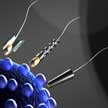 Researchers show how spermatozoa can be useful parts of microdevices: As biocompatible propulsion source, but also entailing other functionalities such as their natural destiny for fertilization, their ability to respond to stimuli, or their ability to take up drugs open up fascinating new applications. They demonstrate first examples of using sperm cells as robotic components. The so-called spermbots are also systems that enable biophysical studies, e.g. of sperm motion in confinement.
Researchers show how spermatozoa can be useful parts of microdevices: As biocompatible propulsion source, but also entailing other functionalities such as their natural destiny for fertilization, their ability to respond to stimuli, or their ability to take up drugs open up fascinating new applications. They demonstrate first examples of using sperm cells as robotic components. The so-called spermbots are also systems that enable biophysical studies, e.g. of sperm motion in confinement.
May 3rd, 2017
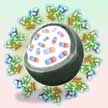 Molecular magnets or single molecule-based magnets are usually anti-ferromagnetic (non-magnetic) at room temperature, which so far has limited their use to laboratory environments. As the first successful molecular magnet in a real-world application, an interdisciplinary research group has reported a new 'exotic' molecular magnet compound - iron salen nanoparticles - which shows intrinsic magnetic nature at room temperature as well as anticancer properties.
Molecular magnets or single molecule-based magnets are usually anti-ferromagnetic (non-magnetic) at room temperature, which so far has limited their use to laboratory environments. As the first successful molecular magnet in a real-world application, an interdisciplinary research group has reported a new 'exotic' molecular magnet compound - iron salen nanoparticles - which shows intrinsic magnetic nature at room temperature as well as anticancer properties.
Apr 13th, 2017
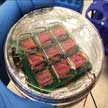 Recently, great progress has been made in the development of bio-hybrid devices with enhanced biological, mechanical and electrical designs. Several muscular tissue based actuators have been described and devices with cultured heart cells have also been reported to produce electrical outputs.
Now, researchers have demonstrated a novel bio-hybrid system, the 'Cell Generator'. The researchers integrated piezoelectric material with 3D-engineered living constructs for energy harvesting and electricity generation.
Recently, great progress has been made in the development of bio-hybrid devices with enhanced biological, mechanical and electrical designs. Several muscular tissue based actuators have been described and devices with cultured heart cells have also been reported to produce electrical outputs.
Now, researchers have demonstrated a novel bio-hybrid system, the 'Cell Generator'. The researchers integrated piezoelectric material with 3D-engineered living constructs for energy harvesting and electricity generation.
Mar 31st, 2017
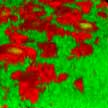 Researchers have demonstrated that nitric-oxide releasing nanoparticles interfere with Staphylococcus aureus (S. aureus) adhesion and prevent biofilm formation on a rat central venous catheters model of infection. Specifically, they demonstrated that a well studied nitric oxide-releasing nanoparticle platform (NO-np) has the potential to reduce the incidence and/or treat central venous catheter infections. The investigators examined the formation of staphylococcal biofilms by confocal and scanning electron microscopy and found that treatment of staphylococcal biofilms with NO-np significantly reduced biofilm thickness and bacterial number compared to control biofilms.
Researchers have demonstrated that nitric-oxide releasing nanoparticles interfere with Staphylococcus aureus (S. aureus) adhesion and prevent biofilm formation on a rat central venous catheters model of infection. Specifically, they demonstrated that a well studied nitric oxide-releasing nanoparticle platform (NO-np) has the potential to reduce the incidence and/or treat central venous catheter infections. The investigators examined the formation of staphylococcal biofilms by confocal and scanning electron microscopy and found that treatment of staphylococcal biofilms with NO-np significantly reduced biofilm thickness and bacterial number compared to control biofilms.
Nov 11th, 2016
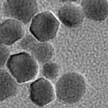 Researchers have, for the first time, used naturally occurring bacterial magnetic nanoparticles (BMPs) - magnetosome extracted from magnetotactic bacteria - to substitute man-made nanoparticles for photothermal cancer therapy. Compared with engineered magnetic nanoparticles, BMPs have specific features such as large-scale production, monodispersity, good biocompatibility, high crystallinity, and close-to-bulk magnetization besides being covered with a lipid bilayer. This layer of biomembrane is particularly useful as it removes the need for a postsynthetic surface modification step for escaping destruction by the body's immune system.
Researchers have, for the first time, used naturally occurring bacterial magnetic nanoparticles (BMPs) - magnetosome extracted from magnetotactic bacteria - to substitute man-made nanoparticles for photothermal cancer therapy. Compared with engineered magnetic nanoparticles, BMPs have specific features such as large-scale production, monodispersity, good biocompatibility, high crystallinity, and close-to-bulk magnetization besides being covered with a lipid bilayer. This layer of biomembrane is particularly useful as it removes the need for a postsynthetic surface modification step for escaping destruction by the body's immune system.
Nov 10th, 2016
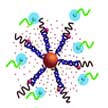 Scientists have designed an advanced type of nanoparticle, which is able to carry drugs directly into cells and release them only in the presence of an appropriate mRNA signature; in other words, the nanoparticle carriers release their payload only in specific - metastatic cancer - cells and remain inactive in healthy cells. The researchers designed nanoparticles that can selectively distinguish healthy cells from model metastatic cells and release their payload - an anticancer drug - only to the model metastatic cells.
Scientists have designed an advanced type of nanoparticle, which is able to carry drugs directly into cells and release them only in the presence of an appropriate mRNA signature; in other words, the nanoparticle carriers release their payload only in specific - metastatic cancer - cells and remain inactive in healthy cells. The researchers designed nanoparticles that can selectively distinguish healthy cells from model metastatic cells and release their payload - an anticancer drug - only to the model metastatic cells.
Oct 31st, 2016
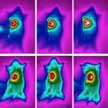 Microwave hyperthermia is one of the most important clinical thermotherapy techniques due to the instinctive advantages of non-intrusive heating model, fair depth of penetration in tissues and ideal potential of killing tumor cells without surgical risks or toxicity of chemotherapy. Scientists have now developed a novel multifunctional nanoplatform to combine the non-thermal and thermal effects of microwave to achieve enhanced thermal/chemo cancer therapy under mild microwave irradiation.
Microwave hyperthermia is one of the most important clinical thermotherapy techniques due to the instinctive advantages of non-intrusive heating model, fair depth of penetration in tissues and ideal potential of killing tumor cells without surgical risks or toxicity of chemotherapy. Scientists have now developed a novel multifunctional nanoplatform to combine the non-thermal and thermal effects of microwave to achieve enhanced thermal/chemo cancer therapy under mild microwave irradiation.
Oct 7th, 2016
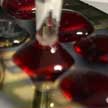 Researchers demonstrate a completely new micro-array design that is looking at capture and detection of circulating tumor cells (CTCs) from an entirely new perspective. As an alternative to invasive biopsies, capturing CTCs is of great interest for evaluating cancer dissemination, predicting patient prognosis, and also for the evaluation of therapeutic treatments, representing a reliable potential alternative to invasive biopsies and subsequent proteomic and functional genetic analysis. The new approach is based on a static isolation in the form of micro-arrays of single-walled carbon nanotubes.
Researchers demonstrate a completely new micro-array design that is looking at capture and detection of circulating tumor cells (CTCs) from an entirely new perspective. As an alternative to invasive biopsies, capturing CTCs is of great interest for evaluating cancer dissemination, predicting patient prognosis, and also for the evaluation of therapeutic treatments, representing a reliable potential alternative to invasive biopsies and subsequent proteomic and functional genetic analysis. The new approach is based on a static isolation in the form of micro-arrays of single-walled carbon nanotubes.
Oct 5th, 2016
 Researchers show how spermatozoa can be useful parts of microdevices: As biocompatible propulsion source, but also entailing other functionalities such as their natural destiny for fertilization, their ability to respond to stimuli, or their ability to take up drugs open up fascinating new applications. They demonstrate first examples of using sperm cells as robotic components. The so-called spermbots are also systems that enable biophysical studies, e.g. of sperm motion in confinement.
Researchers show how spermatozoa can be useful parts of microdevices: As biocompatible propulsion source, but also entailing other functionalities such as their natural destiny for fertilization, their ability to respond to stimuli, or their ability to take up drugs open up fascinating new applications. They demonstrate first examples of using sperm cells as robotic components. The so-called spermbots are also systems that enable biophysical studies, e.g. of sperm motion in confinement.
 Subscribe to our Nanotechnology Spotlight feed
Subscribe to our Nanotechnology Spotlight feed





